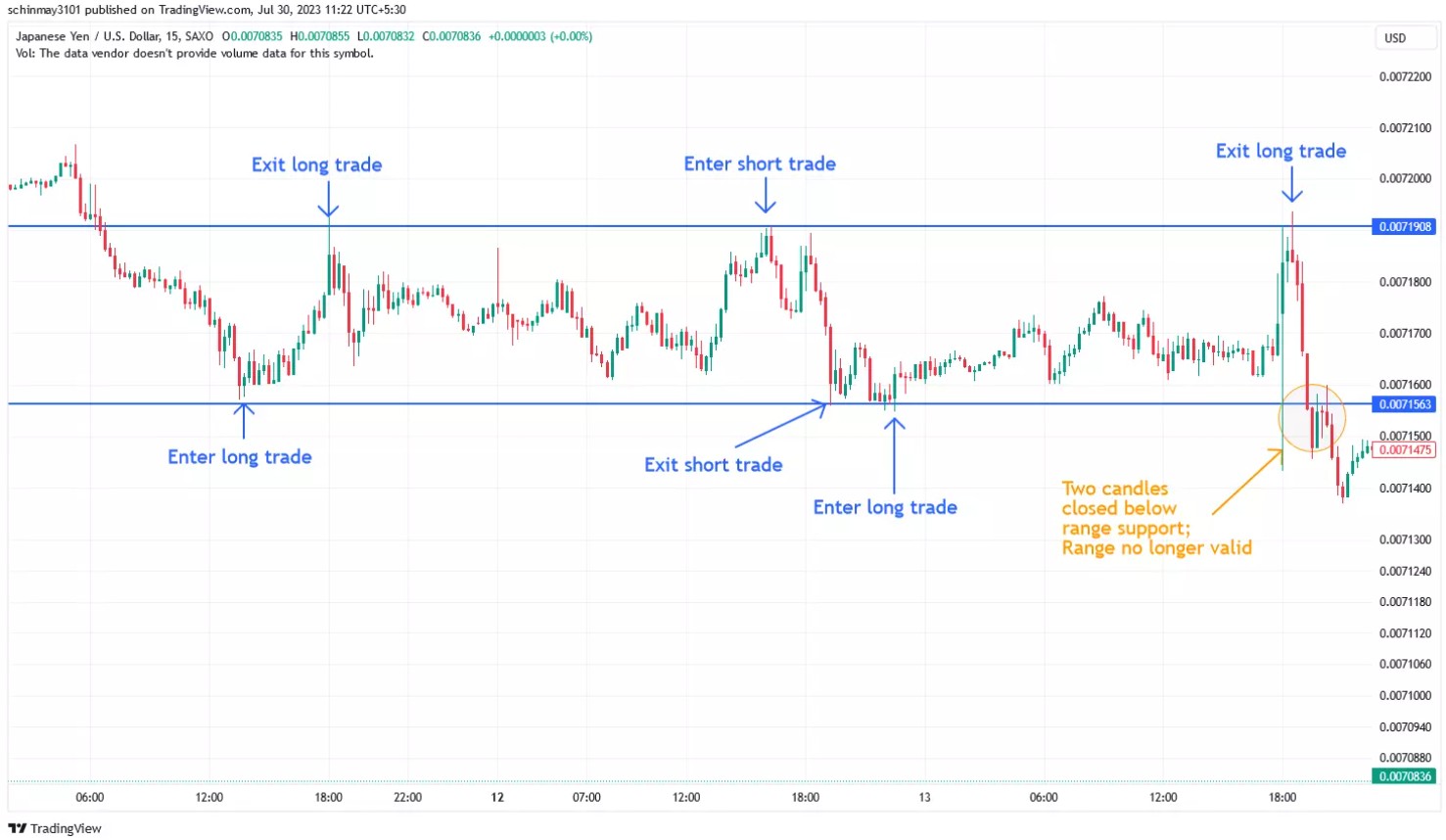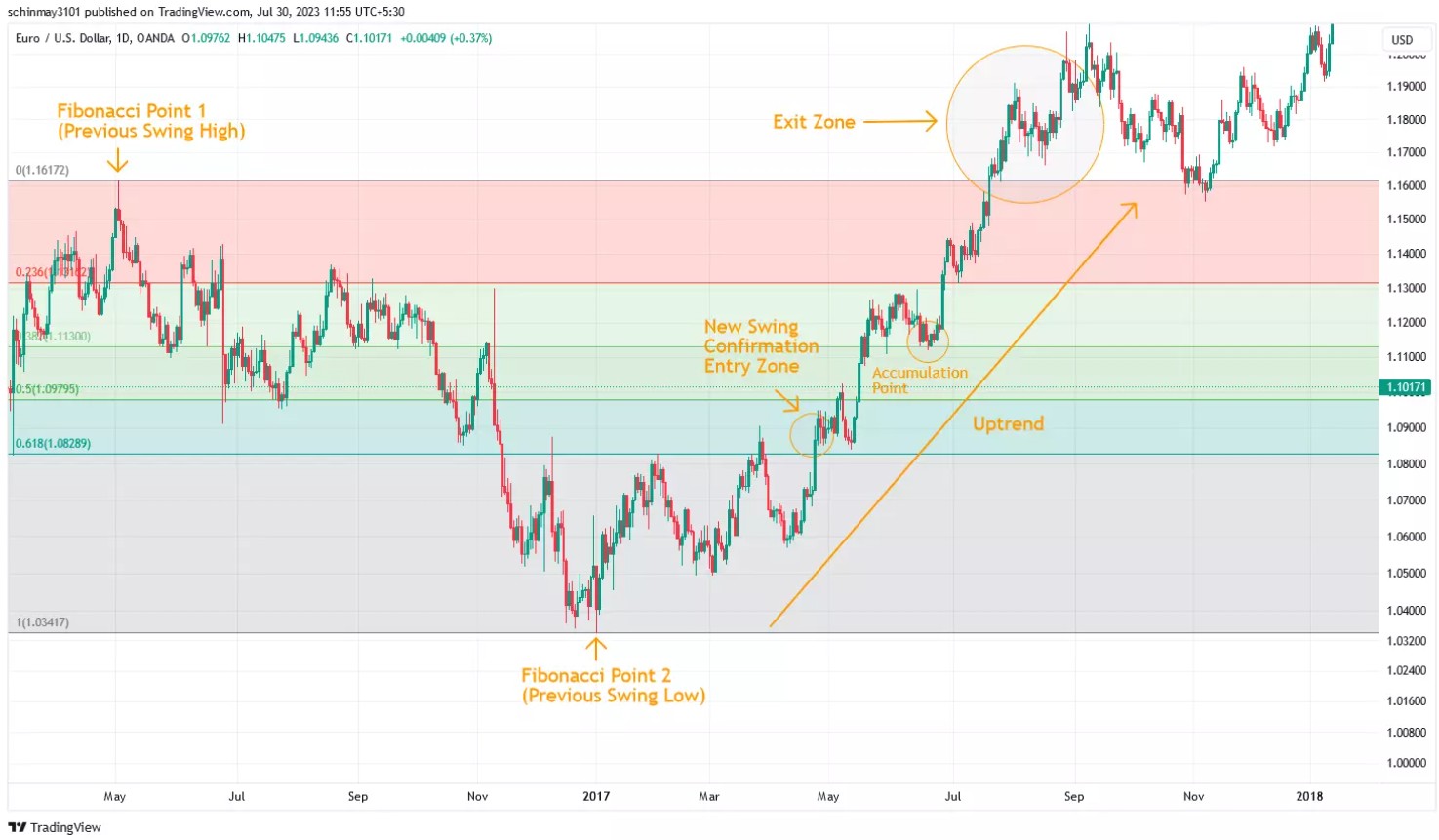Best Forex Trading Strategies For Beginners



Editorial Note: While we adhere to strict Editorial Integrity, this post may contain references to products from our partners. Here's an explanation for How We Make Money. None of the data and information on this webpage constitutes investment advice according to our Disclaimer.
The best Forex trading strategies for beginners are:
Trend trading. Identify price trends using moving averages and trendlines. Suitable for consistent trading in trending markets.
Price action trading. Rely on candlestick patterns, support, and resistance levels. Best for a clean, indicator-free approach.
Range trading. Buy at support and sell at resistance in non-trending markets. Ideal for stable conditions.
Momentum trading. Use RSI or MACD to capture high-impact short-term trades. Perfect for liquid, volatile markets.
Breakout trading. Trade during price breakouts from support/resistance. Effective in volatile markets.
Forex trading can seem overwhelming when you’re just starting, but the right strategy can turn uncertainty into opportunity. For beginners, it’s not about mastering everything at once — it’s about starting with approaches that match your level of understanding and help you grow steadily. This guide explores trading methods that are simple to grasp yet powerful in practice, offering clear pathways to take advantage of market trends and movements.
Best Forex trading strategies for beginners
As a beginner, it is wise to start with low leverage when trading currencies. Low leverage minimizes risk, helps you withstand potential losses, and safeguards your trading capital. This cautious approach allows you to learn and grow without exposing yourself to excessive financial risk.
The Forex trading strategies outlined below are simple to grasp and apply, making them ideal for new traders.
Trend trading
How it works: use trendlines and moving averages to confirm the trend.
Best for: beginners looking for consistency in trending markets.
Trend trading is one of the most widely used and effective Forex strategies. It is relatively easy for beginners to understand and apply. This strategy involves identifying and leveraging trading opportunities in the direction of a price trend.
The process starts by determining the overall trend's direction, strength, and duration. These factors help assess the trend's stability. Once the trend is identified, traders decide on entry and exit points based on the trend's characteristics.
While trend trading offers significant potential, minor price fluctuations against the trend can lead to small losses. This strategy is versatile and can be applied over short, medium, or long terms, with long-term strategies like position trading being particularly favored. Tools such as moving averages, relative strength indicators, directional indices, stochastics, and volume measurements are useful for detecting strong trends.

Price action trading
How it works: focus on candlestick patterns, support, and resistance levels.
Best for: traders who prefer a clean, indicator-free approach.
Price action trading involves analyzing a currency’s historical price movements to forecast its future performance. Instead of relying heavily on technical indicators, traders make decisions based on their understanding of patterns and price behavior.
“Pure” or “naked” price action trading refers to making trades without using external tools, focusing solely on price charts. For instance, a trader might take a long position if the pattern indicates a potential price rise or go short if prices are expected to fall. This strategy emphasizes simplicity and relies on a trader’s ability to interpret market signals effectively.

Range trading
How it works: buy at support and sell at resistance within a range.
Best for: stable, non-trending markets.
Range trading is a strategy used when the market lacks a clear trend and oscillates between defined price levels. This approach involves identifying the range’s support and resistance levels, then buying at support and selling at resistance.
To execute this strategy, traders analyze charts to determine the range’s boundaries and track overbought or oversold conditions within the range. Bollinger bands and oscillators are popular tools for marking range borders and identifying trading opportunities.

Momentum trading
How it works: use RSI or MACD indicators to identify momentum.
Best for: short-term traders seeking high-impact trades.
Momentum trading focuses on capitalizing on price trends driven by strong market movements. The strategy assumes that a price will continue moving in its current direction until the momentum weakens.
Momentum traders observe the trend’s strength and trade when the price reaches its peak, just before a reversal. They use tools like the momentum indicator and stochastic oscillator to monitor market dynamics. This strategy is best suited for liquid and volatile markets like Forex, where frequent price fluctuations create opportunities.

Breakout trading
How it works: enter trades during breakouts to capture large price movements.
Best for: volatile markets.
Breakout trading involves identifying support and resistance levels and waiting for the price to break out of this range. A breakout signals the start of a potential new trend, providing opportunities for traders to enter the market early.
When a breakout occurs, traders set entry and exit points based on the new trend. While not all breakouts lead to sustained trends, this strategy is particularly useful for spotting potential market reversals and initiating early trades.

Swing trading
How it works: combine elements of trend and range trading.
Best for: medium-term opportunities.
Swing trading is a medium-term strategy that aims to profit from price swings over several days or weeks. Swing traders combine technical and fundamental analysis to identify and capitalize on trading opportunities.
This strategy requires a higher capital investment compared to others, making it less accessible for all traders. However, it provides ample time for market analysis and decision-making, making it suitable for beginners to gradually build expertise.

What is a Forex trading strategy?
A strategy is a well-thought-out plan designed to help you achieve a specific goal. Similarly, a Forex trading strategy is a systematic approach that provides traders with insights into whether to buy or sell a currency pair at a particular time.
Components of a Forex trading strategy
Choosing your analysis method
When building your trading strategy, start by deciding how you want to analyze the market. Some traders prefer technical analysis, focusing on patterns and indicators, while others lean on fundamental analysis, looking at economic data and news. You can also mix the two approaches, depending on what works best for you. For example, using candlestick patterns or chart trends can help spot market movements.Learning to read charts and graphs
If you're new to Forex trading, take some time to learn how to interpret charts and graphs. This skill is crucial for understanding market activity. The more you practice, the better you'll get at spotting opportunities and making better decisions.Spotting trading signals
A key part of any strategy is figuring out when to act. Signals, like trends or indicators, show when to buy or sell based on the method you choose. Pay attention to these clues — they guide your moves in the market.Testing your strategy with past data
Before diving in, test your strategy by running it against historical data — this is called backtesting. It’s like trying out a recipe before serving it. This process helps you understand if your approach could work and lets you tweak it for better results in real-time trading.
Key components of a Forex transaction
Entry point
An entry point is the specific price, level, or position where a trader decides to open a trade, whether buying or selling a currency pair.Stop loss
This feature allows traders to limit potential losses or secure profits if the market moves unfavorably. It’s a vital tool for risk management.Take profit
A take profit order automatically closes a trade when it reaches a pre-set profit level. This function is used to lock in gains and minimize risks effectively.
How to implement a Forex trading strategy
Educate yourself
Learn the basics of Forex trading, including market mechanics and strategy principles.Develop a trading plan
Define your financial goals, entry and exit criteria, and risk management strategies.Practice with a demo account
Test strategies in a risk-free environment to refine skills and gain confidence.
| Demo | Min. deposit, $ | Max. leverage | Min Spread EUR/USD, pips | Max Spread EUR/USD, pips | Investor protection | Regulation Level | Open an account | |
|---|---|---|---|---|---|---|---|---|
| Yes | 100 | 1:300 | 0,5 | 0,9 | €20,000 £85,000 SGD 75,000 | Tier-1 | Open an account Your capital is at risk. |
|
| Yes | No | 1:500 | 0,5 | 1,5 | £85,000 €20,000 €100,000 (DE) | Tier-1 | Open an account Your capital is at risk.
|
|
| Yes | No | 1:200 | 0,1 | 0,5 | £85,000 SGD 75,000 $500,000 | Tier-1 | Open an account Your capital is at risk. |
|
| Yes | 100 | 1:50 | 0,7 | 1,2 | £85,000 | Tier-1 | Study review | |
| Yes | No | 1:30 | 0,2 | 0,8 | $500,000 £85,000 | Tier-1 | Open an account Your capital is at risk. |
Manage risk
Use stop-loss orders and never risk more than you can afford to lose.Stay informed
Monitor market trends, news, and economic events to adapt your strategy as needed.
Pros and cons of using a trading strategy
- Pros
- Cons
Provides structure and discipline for trading decisions.
Helps reduce emotional trading and impulsive behavior.
Increases the likelihood of consistent profits.
Allows for clear risk management and capital preservation.
Requires time and effort to learn and master.
No strategy guarantees 100% success.
May need frequent adjustments to suit changing market conditions.
Over-reliance on one strategy can limit flexibility.
Avoid impulsive decisions and stick to your plan
Forget the generic advice about using standard indicators like RSI or MACD. Instead, try what I call time-frame stacking. Check the same currency pair on daily, hourly, and 15-minute charts before deciding what to do. This lets you see the bigger picture and the immediate action all at once. Take it a step further by noticing when the market "breathes" during specific hours.
For instance, the London market open might show sharp moves, while the New York session could bring slower, steady trends. Finding your sweet spot not only sharpens your strategy but makes trading feel less chaotic.
Also, when demo trading, try keeping a raw and honest journal. Write down why you entered or exited a trade, what you noticed on the charts, and how you felt during each decision. Did you feel anxious before pulling the trigger? Were you chasing losses?
Over time, this habit reveals patterns — not just in the market, but in how you react to it. It’s like a mirror for your trading behavior, helping you tweak both your strategy and your mindset. This way, you’re not just learning to trade — you’re learning to manage yourself.
Conclusion
Forex trading strategies are the backbone of successful trading. By starting with beginner-friendly approaches like trend trading or price action trading, you can build confidence and discipline. Remember, no strategy is foolproof; proper risk management and continuous learning are crucial for long-term success. Stay consistent, practice diligently, and adapt your strategies to evolving market conditions. With patience and perseverance, Forex trading can become a rewarding pursuit.
FAQs
What is the easiest Forex strategy for beginners?
Trend trading is often considered the simplest strategy due to its focus on following clear market trends.
How much capital do I need to start Forex trading?
You can start with as little as $100, but a larger account (e.g., $500–$1,000) offers more flexibility and risk control.
Can I trade Forex without using leverage?
Yes, you can trade without leverage, which reduces risk but also limits potential profits.
How long does it take to become a successful Forex trader?
It varies, but most traders need at least 6–12 months of consistent practice to develop basic skills.
Related Articles
Team that worked on the article
Rinat Gismatullin is an entrepreneur and a business expert with 9 years of experience in trading. He focuses on long-term investing, but also uses intraday trading. He is a private consultant on investing in digital assets and personal finance. Rinat holds two degrees in Economy and Linguistics.
Chinmay Soni is a financial analyst with more than 5 years of experience in working with stocks, Forex, derivatives, and other assets. As a founder of a boutique research firm and an active researcher, he covers various industries and fields, providing insights backed by statistical data. He is also an educator in the field of finance and technology.
As an author for Traders Union, he contributes his deep analytical insights on various topics, taking into account various aspects.
Mirjan Hipolito is a journalist and news editor at Traders Union. She is an expert crypto writer with five years of experience in the financial markets. Her specialties are daily market news, price predictions, and Initial Coin Offerings (ICO).
Risk management is a risk management model that involves controlling potential losses while maximizing profits. The main risk management tools are stop loss, take profit, calculation of position volume taking into account leverage and pip value.
An investor is an individual, who invests money in an asset with the expectation that its value would appreciate in the future. The asset can be anything, including a bond, debenture, mutual fund, equity, gold, silver, exchange-traded funds (ETFs), and real-estate property.
Cryptocurrency is a type of digital or virtual currency that relies on cryptography for security. Unlike traditional currencies issued by governments (fiat currencies), cryptocurrencies operate on decentralized networks, typically based on blockchain technology.
The Stochastic Oscillator is a technical indicator used in financial analysis to gauge the momentum of a security's price and identify overbought or oversold conditions by comparing the closing price to a specified price range over a defined period.
Day trading involves buying and selling financial assets within the same trading day, with the goal of profiting from short-term price fluctuations, and positions are typically not held overnight.






























































































































